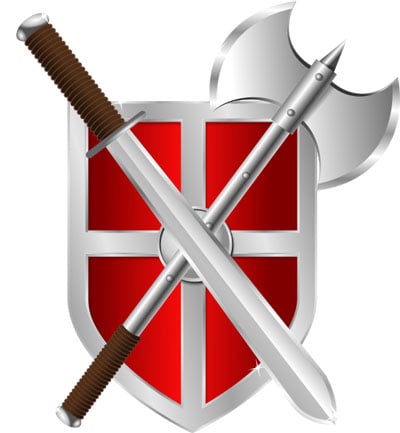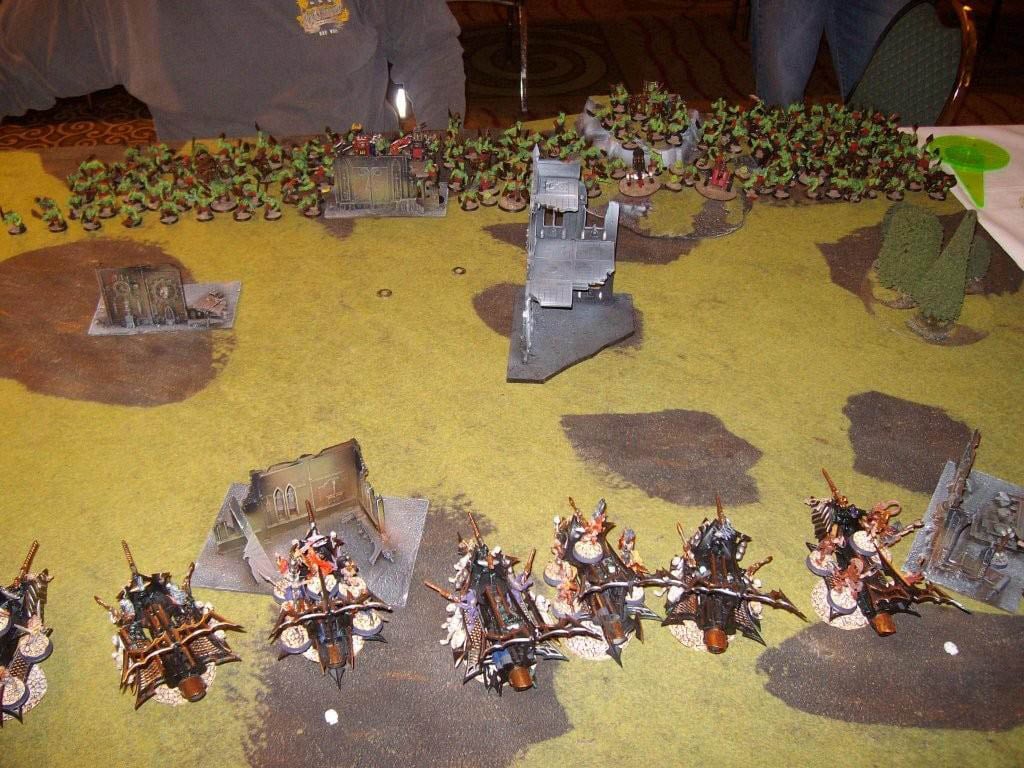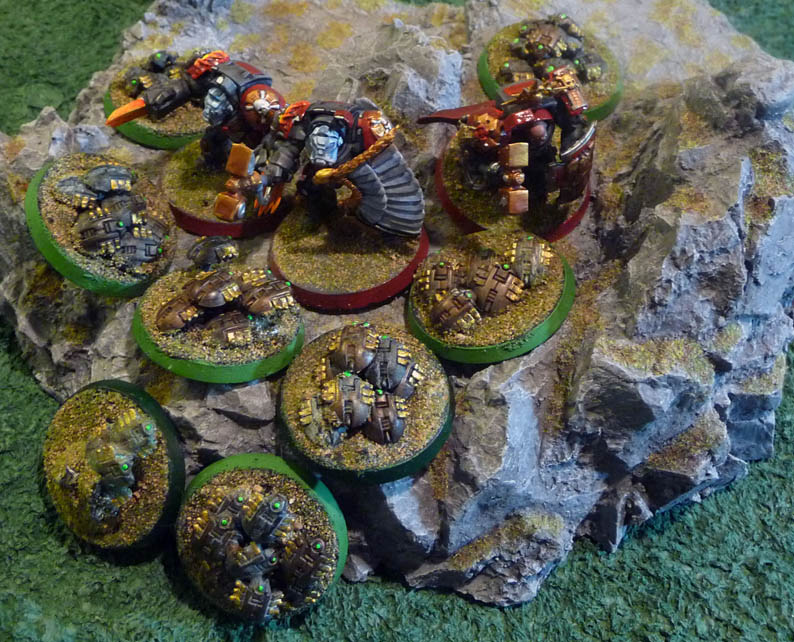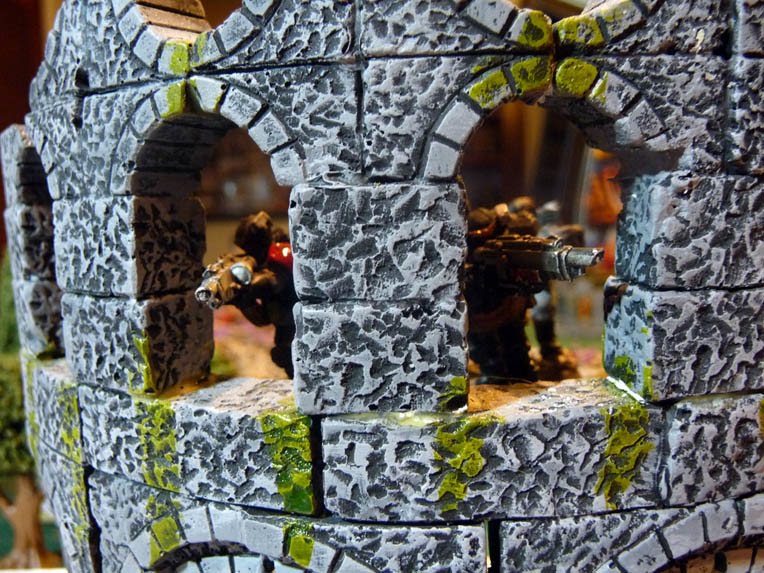40K TACTICS: Nine Principles of War – Pt. 5

A series by: Rogue428
Welcome back friends. So far, we’ve managed to cover four of the nine principles, Mass, Objective, Simplicity, and Security. Now we come to one of the most dynamic of the principles of war, Maneuver! Sadly, this seems to be a principle much neglected in many Warhammer 40K games, since we often devolve into a charge straight across the table or a static gun line. Sometimes, that’s all it takes, but hopefully we can start thinking a little more creatively with this part of the thought exercise.
Maneuver: Place the enemy in a position of disadvantage through the flexible application of combat power.
“The easy way generally gets you killed.”
-Murphy’s Laws of Combat
Excepting larger team games and Apocalypse, most of the time we play 40K, we find ourselves on a four foot by six foot playing surface (or smaller). One would think that doesn’t leave a whole lot of room for Maneuver with a capital ‘M’. Depending on the points in use and the armies at play, there may not be many options except to go straight across the table. But Fifth Edition has given us many other options.
We always have the option to Deep Strike, if our forces can use it. Though not always the timeliest of deployment methods and risky, it can put appropriate forces exactly where they need to be. Nearly every army has access to it in some form or another. In the case of a Daemon army, it can be particularly fearsome. If you’re lucky enough to be playing the Emperor’s Finest, Drop Pods also fall into this category albeit being somewhat safer.
Use the Infiltrate ability to give you an edge during deployment. Put opponent forces in danger where they seemed to be safe. Force an early contest for an objective on the far side of the table to lure an opponent into committing sooner than he would like or to distract him from a more significant threat that needs time to close the distance. Use the scout ability to the same effect, or to bring deadly weapons closer to bear. For instance, a few inches can make a world of difference to melta weapons. Also, consider that units with the scout ability pass it on to dedicated transports. That gives them a greatly increased threat radius whether scouting or outflanking.
Consider the strategic use of reserves. One of the neat things about Fifth Edition is that you can always keep forces in reserve. Whether that is good or bad depends on the situation, on your die rolls, and on any modifiers you can bring to your advantage. Reserves force your opponent to keep from committing everything he has. If forces him to consider where your forces may turn up and what he, in turn, must hold back to counter them when they arrive. Especially with the outflank ability. Yes, it does leave a measure of uncertainty due to the die rolls, but it still means that two-thirds of the time, your outflanking forces will arrive exactly where you want them to, good odds considering how powerful some of those arriving forces could be.
Also, consider strategic withdrawal, particularly if you are playing a highly mobile list. Tempt your opponent into committing prematurely and then disengage and move to your true goal. Nothing breaks an opponent’s will faster than having his ten man Assault Terminator squad deep strike exactly where he wanted them in the middle of your army, only to have your Dark Eldar force mount their raiders and turbo-boost away. Even with running and good die rolls, it will now take that unit several turns to re-engage, which gives you that many turns to shoot them to bits or deal with other threats.
‘Quagmire’ units work to much the same effect. ‘Quagmire’ units are a variant of the ‘popcorn’ unit. Where a ‘popcorn’ unit dies easily (hopefully, on your terms) and serves as an able distractor, a ‘quagmire’ unit is relatively weak, dies easily, but over a significant portion of time. Swarms come to mind. Those Scarabs we referred to as ‘popcorn’, turn into a deep ‘quagmire’ in the right numbers. Think of your opponent’s glorious HQ unit mired up to the knees in Nurglings and unable to fulfill their primary duty for even just 2 turns of close combat. That’s a third of most games! Consider that you can also rule out the first turn in most cases and you’ve just disabled a powerful HQ for half the turns of most games!
Use opponent’s “popcorn” units to aid in your movement. Watch for the bait and switch. Use the vehicle assault to get extra movement as well. Consider that Chimera your opponent is using to screen fire from his troops. So what if your forces can’t reliably damage it, because it moved too fast. You can still assault it and give yourself extra movement in the proper situation.
Also, consider ‘turtling’, ‘castling’, or ‘refusing the flank’. The definitions we like to use go like this: ‘Turtling’ means using the available terrain to block off your army and hiding within a ‘shell’ of terrain, ‘Castling’ is similar in concept but really involves using your own vehicles, usually light armor such as Chimeras or Rhinos, to achieve a similar effect. Reflect on the art of using various vehicles to screen infantry and manage both incoming and outgoing lines of sight and fields of fire. When you ‘refuse the flank’, you deploy one flank of your army very lightly, stacking one side heavily. Essentially, you refuse the option of attacking that flank to your opponent. If he chooses to attack the ‘light’ side, it gives the ‘stacked’ side an easy opening to enter a single envelopment. Each of these methods maximizes your firepower or assault potential and minimizes your opponent’s incoming fire across the whole of your force. Think about your average sized list spread across six feet. Now imagine it concentrated across three feet or less. (Granted, this might not be the best choice considering how many templates some armies can lay down. There is a time to spread out as well.)
Bottom line: set a course but be flexible.
Coming up next, we’ll discuss the Principle of Offensive and how the best offense is really…well…a good offense! Until then, what are your thoughts on the Principle of Maneuver, and what dirty tricks do you keep up your sleeve?
Rogue428 has been playing 40K since the start of 4th edition. He fields Dark Eldar, Tyranids, Daemonhunters, Necron, and of course, Space Marines. He is anxiously looking forward to setting aside his marines and taking up with the Great Devourer in the near future.





